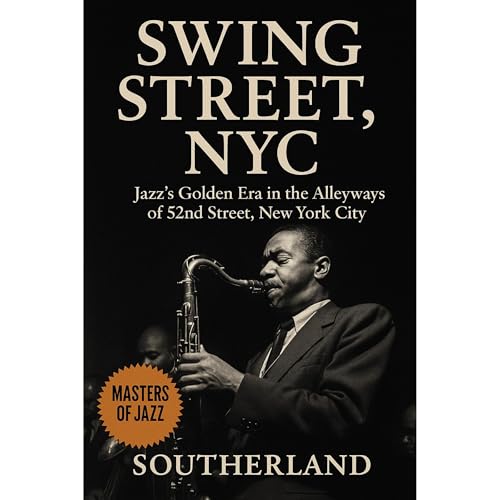
Swing Street, NYC: Jazz’s Golden Era in the Alleyways of 52nd Street, New York City
The Rise and Fall of Jazz on 52nd Street
No se pudo agregar al carrito
Add to Cart failed.
Error al Agregar a Lista de Deseos.
Error al eliminar de la lista de deseos.
Error al añadir a tu biblioteca
Error al seguir el podcast
Error al dejar de seguir el podcast
$0.00 por los primeros 30 días
Compra ahora por $5.99
-
Narrado por:
-
Virtual Voice

Este título utiliza narración de voz virtual
Swing Street, NYC is a ferocious excavation of the one city block that briefly became the molten core of American music. From the mid-1930s through the early 1950s, Manhattan’s 52nd Street—unassuming, narrow, overbuilt—hosted the nightly revolution of jazz. Cramped clubs like The Three Deuces, Onyx, and the Famous Door gave birth to bebop and shattered the conventions of swing, even as the city looked the other way.
This book doesn’t romanticize. It remembers. It charts the rise of the scene through the stories of musicians who made it: Charlie Parker, Dizzy Gillespie, Thelonious Monk, Billie Holiday, Bud Powell, Mary Lou Williams, and dozens more. It follows the landlords, the club owners, the hustlers, and the drummers who slept under pool tables. It digs into the racial politics, the cabaret cards, the police raids, and the improvisational genius that refused to be institutionalized.
With an obsessive eye for detail and a voice that channels the rhythm of the very music it documents, Swing Street, NYC is not just a history—it’s a confrontation. It asks why the city that gave these artists a stage also gave them so few exit routes. It interrogates how sound survives erasure. And it insists that 52nd Street, though mostly vanished from the skyline, remains etched into the DNA of every note that refuses to behave.
This is the story of a street that never stood still—and of the artists who, night after night, taught the city how to listen.



